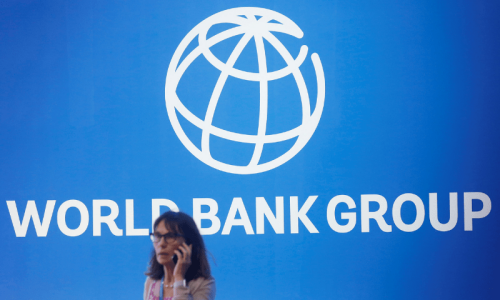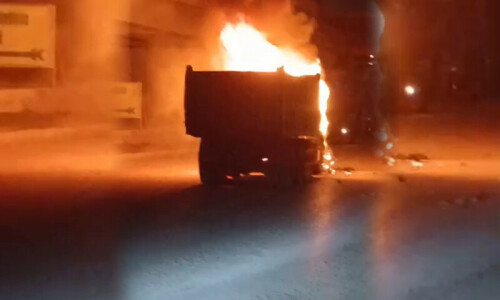IN the bail petition of Imran Khan and Shah Mahmood Qureshi in the ‘cipher case’, Justice Athar Minallah, through an order dated Dec 22, 2023, almost prophetically observed: “Discrimination or intimidation on the basis of political opinions are alien to the concept of genuine elections and even such a perception would be sufficient to … relegate it to the status of sham elections [emphasis added].”
Furthermore, in the ‘PTI level playing field case’, Justice Mansoor Ali Shah, through the order dated Dec 22, 2023, while prima facie accepting the allegations of the PTI against the ECP, observed: “A level playing field is essential for healthy competition, ensuring that elections are a true reflection of the people’s choice, rather than the result of manipulation or coercion [emphasis added]”.
Could anyone have even imagined that, less than a month after these two progressive Supreme Court orders, it would be another SC judgement which would deny electoral participation to a national popular political party like the PTI, by depriving its candidates of a common election symbol?
Symbols as the soul of elections:
A 12-member bench of the SC in the landmark ‘Benazir Bhutto symbols case’ (1989) had held, in essence, that symbols are the very soul of elections and also a fundamental right of political parties under Article 17 of the Constitution because they are central to the voters’ right to identify and chose their public representatives in the less-educated societies of South Asia.
It is precisely because of this undisputed and entrenched constitutional jurisprudence that the Peshawar High Court’s (PHC) brilliant and courageous judgement of Jan 12, 2024 also based its declaration and direction to allot the election symbol to the PTI on the series of SC judgements in the ‘Benazir Bhutto political party case’ (1988), ‘Benazir Bhutto symbols case’ (1989) and the ‘Nawaz Sharif case’ (1993).
Constitutionally speaking, and in terms of binding judicial precedents in Pakistan, there can be no democracy without party-based elections, there can be no elections without political parties, and there can be no political party participation in elections without election symbols.
Erroneous SC reasoning:
The Supreme Court’s short order dated Jan 13, 2024 in the ‘PTI election symbol case’, which upholds the ECP order of Dec 22, 2023, denies the election symbol to the PTI, and sets aside the PHC judgement, has given five main reasons for its order.
The judgement contains no discussion on the fundamental right of a political party to an election symbol based on the ‘Benazir Bhutto symbols case’.
Firstly, the SC reasons that the PHC had no territorial jurisdiction because petitions by the PTI challenging the earlier ECP order of Nov 23, 2023, declaring the PTI intra-party elections of June 10, 2022, illegal, were pending in the Lahore High Court. Thus, the PTI should have filed its petition challenging the ECP order of Dec 22, 2023, before the LHC.
But even this hyper-technical objection is erroneous because the SC itself accepts that both the PHC and LHC had concurrent jurisdiction to examine the legality of the ECP order of Dec 22, 2023. Moreover, the SC has completely failed to examine that, in terms of the Salahuddin Tirmizi SC judgement (2008), it is the PHC which had primary jurisdiction because the second-last petition (No.5791-P/2023) with regard to intra-party election proceedings pending before the ECP was filed in December 2023 before the PHC and not the LHC.
Secondly, the SC reasoned that the ECP order denying the election symbol to the PTI was not a case of victimisation, because the ECP had been calling upon PTI to hold elections since May 24, 2021, when the party was in the federal government, and 13 other parties’ intra-party elections had also not been accepted by the ECP.
This SC reasoning is erroneous for three reasons: (a) only those who are oblivious to events throughout 2023 to date would consider the ECP as being fair towards the PTI; (b) the SC judgement of Dec 22, 2023 in the ‘level playing field case’ itself acknowledges the prima facie validity of the unfair treatment towards PTI; (c) is the ECP action against these 13 other insignificant parties even comparable to the PTI’s case? Even otherwise, 13 wrongs don’t make it right.
Thirdly, it was said there was no proof showing even a semblance of intra-party elections being held. But this was never even an allegation by the ECP, which had accepted that intra-party elections were held, but not in accordance with the PTI’s constitution. Therefore, the SC had no jurisdiction to give such a finding.
Fourthly, few PTI members were denied nomination papers and the election notice did not mention the exact venue in Peshawar and even that venue was changed. But this was never even an allegation made by the ECP. Therefore, the SC had no jurisdiction to give such a finding.
Fifthly, the PHC had wrongly held that the ECP did not have the jurisdiction to adjudicate on the internal legality of a political party’s intra-party elections. But rather precisely, the PHC has held that Section 209 of the Election Act, 2017, doesn’t confer any jurisdiction on the ECP to question the substantive and procedural internal legality of such intra-party elections. On the other hand, the SC fails to point out any provision which confers such a substantive jurisdiction.
What is surprising about the judgement is that it contains no discussion at all on the fundamental right of a political party to an election symbol based on the ‘Benazir Bhutto symbols case’ (1989) and other SC cases.
In the presence of such a fundamental right and judicial precedents, it fails to consider whether, on the basis of major or minor irregularities in intra-party elections, the election party symbol can be denied so close to national elections, in effect banning the party from participating in them.
The SC judgement in the ‘PTI election symbols case’ bears an uncanny resemblance in its style of reasoning to the federal court judgement in the ‘Maulvi Tamizuddin Khan case’ (1955), which was also decided on the flawed reasoning of hyper-legal technicality. The 1955 judgement was also oblivious to the principles of constitutional democracy. Sadly, the ghost of chief justice Munir is alive and kicking in 2024.
The writer is a lawyer.
Published in Dawn, January 19th, 2024













































